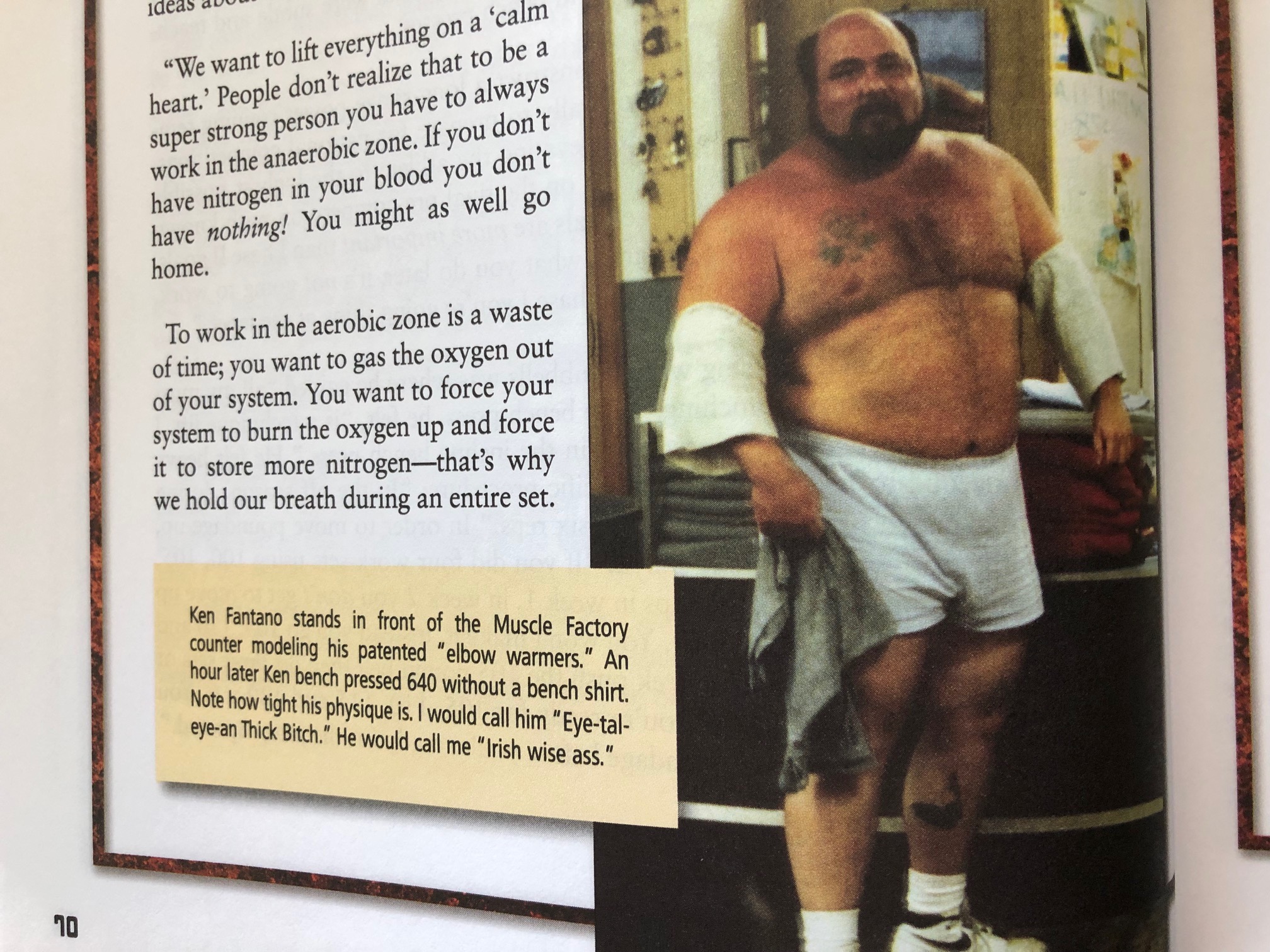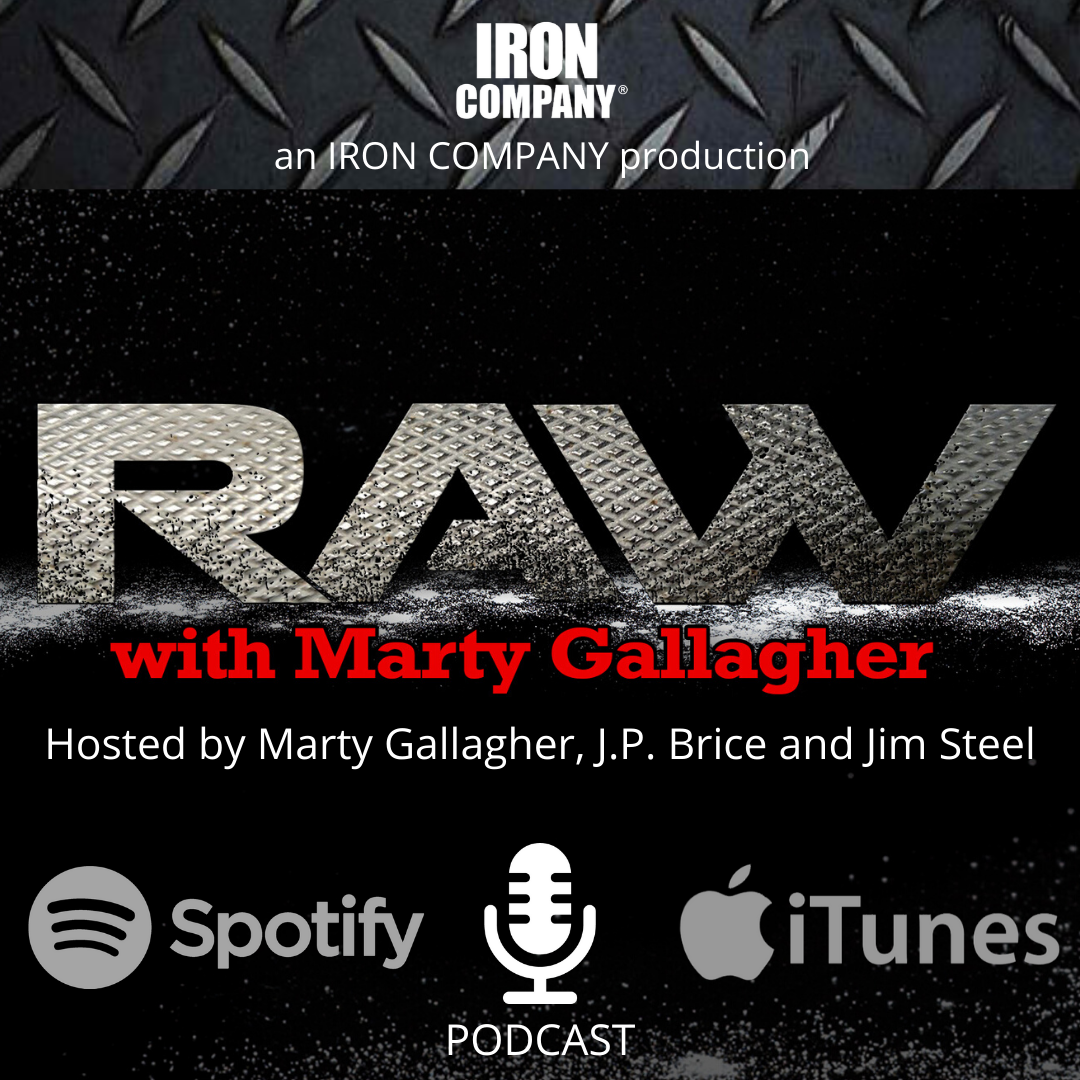
Powerlifting Training Mentors: Ken Fantano - Part 3
Powerlifting Training mentors: similarities and contrasts
Ken Fantano
In 1989 I moved to Milford, Connecticut to take a job running a steel warehouse. On my first weekend in town my new boss took me a marina bar in Bridgeport. The bar was dockside and elaborate, a huge 3D replica of the Titanic hung over the square bar that dominated the middle of the large room. It was Saturday afternoon and a reggae band was tearing it up on the deck overlooking the docked boats.
The place was already packed when we walked in at 11 am. We were standing and leaning against the bar drinking our 1st round of Bloody Marys’ when Bobby my boss elbowed me and said, “Hey! You must know that guy!” Before even looking I thought, that is a hell of a strange thing to say to a man (me) sitting at a bar he had never been to, in a city he had never visited.
My boss pointed to a tall, muscled-up Italian dude wearing an Izod shirt, streamlined black shades, pressed white shorts, docksider deck shoes and a gold Rolex watch on the left wrist of his 21-inch arm. He was the center of attention in a circle of attractive females and some inconsequential beta males. I looked at the animated giant and had a flash of partial recognition. I mentally scrapped off the hair gel. What would he look like without the Ray bans, the cabin cruiser tan, and the massive gold Italian Horn that hung around his neck?
Bang! I had it! I did in fact know this man. We had spent hours together and not too long ago. Six months earlier I had coached an up-and-coming superheavyweight powerlifter to a second-place finish at the APF Junior National championships in Tampa, Florida. The 3rd place finisher was the gargantuan chunk of man flesh I was looking at: Dino D. My lifter and Dino had a back-and-forth battle for the runner-up slot. Elliot, my lifter, caught Dino from behind with a clutch, 3rd attempt deadlift, pulling 775-pounds to secure second place.
The competition ended on Saturday and on Sunday there had been a massive keg party on the beach for the lifters, coaches, wives, and girlfriends. I drank beer for hours, most of the time sitting next to Hoss the Boss (a Cleveland Hell’s Angel) or Dino. He and I talked and laughed amongst a gaggle of lifters clustered round the beer keg. He looked a lot different in his bar garb. As I walked over, he caught my approach. As I got closer, his face morphed from alert tension into puzzlement before a slow, dawning recognition took place.
“Marty??!” he was incredulous. In the next instant he knew it was me and threw a beefy arm around me. It was like being bear hugged by a grizzly. “What the F@3k are you doing here??” I explained and asked where the hardcore locals trained, “Ain’t but one place Mart…Kenny Fantano’s Muscle Factory in West Haven.” I got Dino to make a formal introduction to Ken and immediately began training with the Muscle Factory contingent.
Ken would shut the gym to the public on Sunday. That is when a crew of 10-15 lifters would gather to work through squats, bench presses, deadlifts, followed by some arm work and grip assistance. We started at 9am and were done at noon. Ken would do heavy 45-degree incline presses 2-3 days later.
I was putting in six days a week dawn till dusk ramrodding a bunch of warehouse idiots that drank bottles of 40-ounce malt liquor for lunch before coming back to work to operate forklifts and cranes carrying 1,000-pound steel beams fifteen feet in the air. I worked ten-hour days six days a week and I had neither the time nor the energy to train during the week.
Ken’s would be my first ever experience with once-a-week powerlifting training. I was dubious about even lifting at all - but it was once a week training or no training at all. I thought, at best once weekly powerlifting training might be used to maintain whatever strength I currently had. The idea that I could actually improve training once weekly seemed preposterous.
When I took the job, I had resigned myself to giving up lifting altogether. To have fallen in with the Fantano crew (who happened to subscribe to a powerlifting training template that suited my circumstances perfectly) was serendipitous, perfect timing: the right training partners appeared at the right time with the right template, one that they just happened to practice on the only day of the week I could attend. It was meant to be.
I learned much during this period. First and foremost, I learned that once-a-week powerlifting training was a lot more than just treading water: if practiced with the requisite (periodized) ferocity, this was a rich vein of progress to be mined. I progressed at an unbelievable (given my circumstance) rate. I learned to jettison my frequency preconceptions, I had my intensity benchmarks confirmed, I learned about “fast” peaking and was dazzled by Ken’s technical wizardry. Ken was a subtle and intricate technician, his approach, his postulations and strategies worked for everyone that used them.
In many ways, the Fantano powerlifting training template was “half a Cassidy.” Rather than working through all three lifts, plus arms and other assorted assistance work twice a week, as Hugh did, Ken’s crew did pretty much the same massive workout once a week.
True, Ken would train the 45-degree incline dumbbell press on the Wednesday following Sunday’s workout, but for normal humans not incline bench pressing 400-pounds for six paused reps, it was easy to slip in 3-4 sets of inclines (with half his poundage) after benching on Sunday, thereby avoiding Wednesday altogether.
The Fantano crew was incredibly strong. And they all subscribed to and practiced the same powerlifting training template. In a gym of less than 100 members they had three legitimate 900 + pound squatters and the same three men, Gene Donat, Danny D’Arrico and Ken, were all were 600-pound raw benchers. The other Sunday lifters were all top state, regional and local contenders.
At his awesome 360-pound bodyweight peak, Fantano performed a 633-pound bench press for a paused double. Ken squatted 953-pounds, ass-on-heels, again, for a double. This wearing knee wraps and a belt. Danny D’Arrico squatted 940, bench press 600-raw and placed 2nd to Dave Passanella in the 275-pound class at the Tampa Junior Nationals. Gene Donat placed 2nd at the USPF Nationals, posting a 950 squat and 611-pound (shirtless) bench press.
After three months of once a week powerlifting training, I entered and won the Connecticut state championships as a 220-pound lifter: I squatted 660, bench pressed 353 (raw) and deadlifted 673, this after a 14-week cycle. I started the cycle weighing a light and weak 204-pounds. I had lots of muscle memory and came up quick.
I found out firsthand that deadlifting after squatting reduced deadlift poundage-handling ability if done in the same session. However, those that deadlift on a different day invariably lose deadlift power on the day of competition. When they are forced to deadlift after decimating their legs in the squat, their deadlifts nosedive. They are not used to it.
Men that squat and deadlift on the same day see their competition deadlifts increase. There can be a three to four-hour gap between squats and deadlifts in a competition. Training at Ken’s on Sunday meant I had to deadlift 40-minutes after blasting my legs squatting. I pulled 40-pounds more at the competition than in training because I had way more rest and felt fresh. Ken’s approach, like Mark Chaillet’s approach, created the “rested effort.” The body was trained as a whole and then rested as a whole.
Ken broke bench press technique down to a degree I had never seen before or since. He would create complex, precision drawings to explain his bench approach: angles of descent and ascent, the leg drive, the torso expansion, the creation of a jolt that made the bar fly off the chest. Ken felt that the bench press was a “technique lift.” He felt he built the power and strength for bench pressing by performing 45-degree incline presses with giant dumbbells.
At his peak, Ken was hitting six paused reps with a pair of 200s. “The incline dumbbell press gives me the contraction I am looking for.” Ken’s approach seemed halfway between Chaillet’s uber-minimalism and Cassidy’s uber-maximalism. The Fantano approach taught me that, without a doubt, once-a-week powerlifting training worked.
Forced into once-a-week powerlifting training by life circumstance, I discovered that less could be better. Is once a week training the end-all/be-all? a training template that trumps all others? Of course not. That is like saying a saw trumps a hammer. If you only have one tool in your toolbox, you are screwed.
The elite trainer has a giant toolbox of battle-tested training tools, strategies ready to select from when the current training program runs out of gas – as does every training program. No matter how sophisticated or effective, every powerlifting training regimen has a shelf life. Use it, squeeze all the juice out of it, recognize when progress stalls, thank it, place it back in the drawer for use in the future. Rotate in something new and fresh, something vibrant, something that contrasts dramatically to what has just run its course. To unblock the progress logjam requires doing something different.
Fantano caused me to rethink powerlifting training frequency. George Orwell was opined about “smelly little orthodoxies.” One of my smelly preconceptions was that the idea of strength training once a week and progressing was physiologically impossible. I found out different.
In 2020, every Sunday morning we run a two to three-hour training session that precisely replicates the Fantano template. Only instead of elite powerlifters gathering in pursuit of world records and national titles, regular men gather in pursuit of radical improvements in physique and performance. We got stratospheric gains in 1989 using once a week training and we are getting stratospheric gains in 2020 using once a week training. Get to reexamining some of your own smelly little orthodoxies.
Read Part 1 HERE
Read Part 2 HERE
Read Part 4 HERE
About the Author
As an athlete Marty Gallagher is a national and world champion in Olympic lifting and powerlifting. He was a world champion team coach in 1991 and coached Black's Gym to five national team titles. He's also coached some of the strongest men on the planet including Kirk Karwoski when he completed his world record 1,003 lb. squat. Today he teaches the US Secret Service and Tier 1 Spec Ops on how to maximize their strength in minimal time. As a writer since 1978 he’s written for Powerlifting USA, Milo, Flex Magazine, Muscle & Fitness, Prime Fitness, Washington Post, Dragon Door and now IRON COMPANY. He’s also the author of multiple books including Purposeful Primitive, Strong Medicine, Ed Coan’s book “Coan, The Man, the Myth, the Method" and numerous others. Read the Marty Gallagher biography here.


